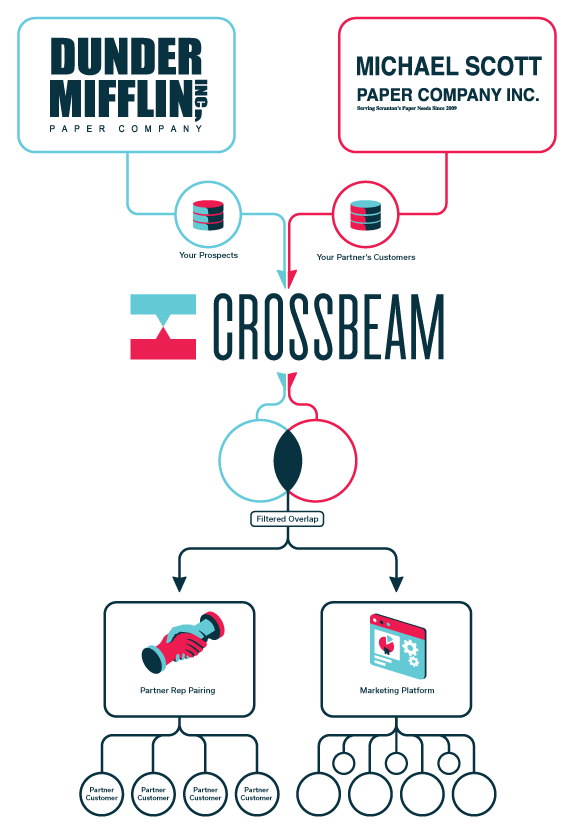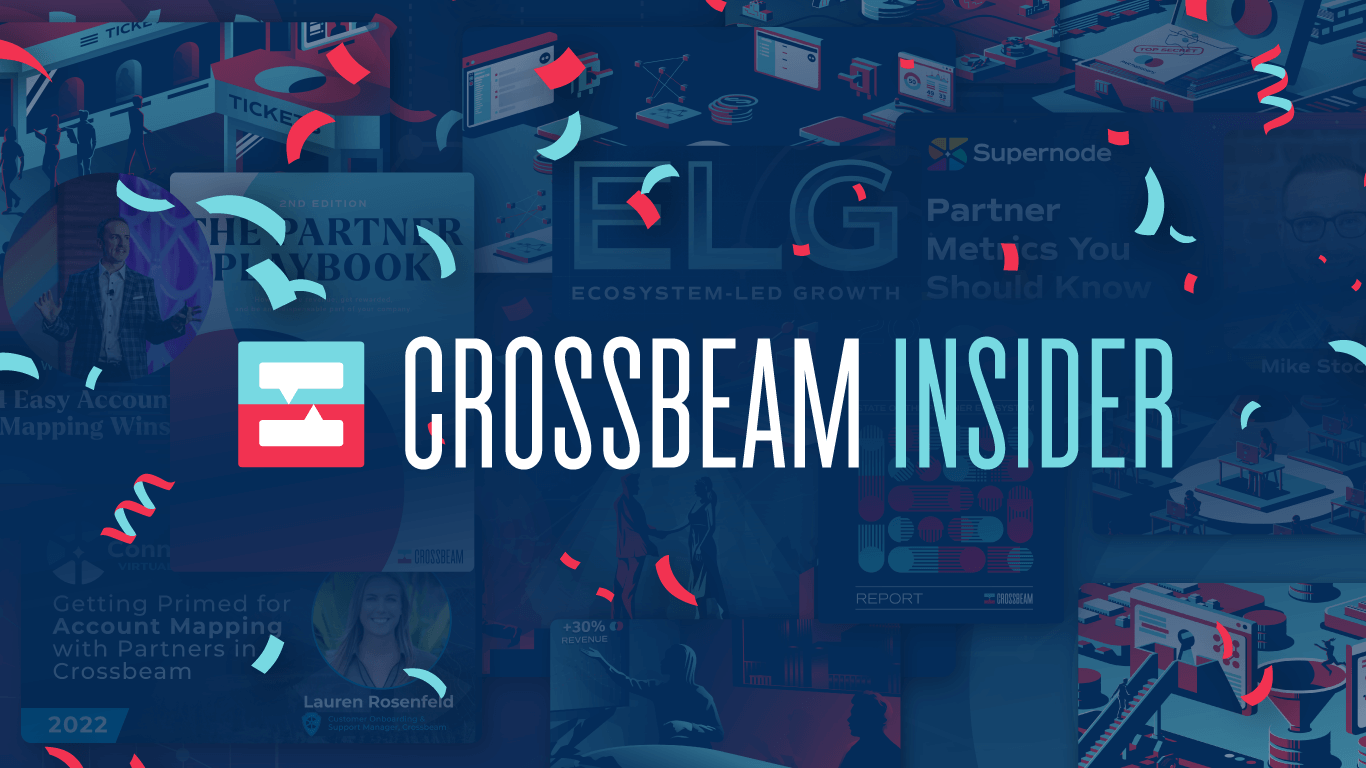One of the most common partnership strategies we see at Crossbeam is mapping your leads with a partner’s customers (and vice versa).
Good lead-to-customer mapping is like when Vin Diesel flips the NOS switch in Fast and the Furious: it gets you to the finish line faster.

Vin Diesel: Partnerships innovator
And when you have a list of leads you are targeting, getting some additional help from a trusted partner turns a lead to an opportunity and then a paying customer—leading to some well-deserved revenue.
We’ve seen the good, the bad, and the ugly of how those lead-to-customer lists get put to use. Here are some of the most common and effective strategies that we see Crossbeam customers implement after leads are mapped to a partner’s customers.
(A note: we’re keeping it high-level here. Many of the exact tactics depend on your partnership dynamics, business model, size, and industry.)
Let’s look at each one.
1 – Account rep mapping
This is one of the more popular next steps we see with Crossbeam customers. Many times, a lead stalls because of a gap in information. Maybe you’re talking to the wrong decision-maker, or the company’s strategic plans have shifted. In this example, your partner’s Customer Success Manager (CSM) or Account Executive (AE) is giving you additional context and introductions to help your own AE close the deal:
- Create the list of partner customers that overlap with your leads.
- Note the rep on each side and their contact info (In Crossbeam, you can use our Salesforce integration to handle this all in the CSM).
- Introduce the partner sales rep to your sales rep. This is sometimes done using a shared Slack channel.
- Task both reps with an outreach plan. Some of our customers provide a standard doc and question list.

Creating a list of overlapped reps using Crossbeam’s Salesforce integration. You can also do this manually with spreadsheets, but we wouldn’t recommend it.
2 – Account Based Marketing (ABM)
Account Based Marketing or “ABM” is the outbound marketing strategy of directly targeting select high-value accounts. For example, maybe you really think Airbnb would be a great customer of yours. An ABM approach would mean running targeted digital advertising, sending personal invitations to events, and more (our friends at Hubspot have a comprehensive guide).
In 2018, Forrester reported that 92% of B2B marketers surveyed “agree that better data and more research are key to ABM success.” That’s where your matching comes in. Your partner’s data and research on a lead could be just the thing to push your ABM strategy forward:
- Compare your leads with your partner’s customers.
- Review the overlap — are there companies that your partner would be able to enrich your understanding?
- Have your partner share additional fields or contacts at the overlapping companies.
- Import the list of contacts into your ABM software to build out a target list.
- Review the list and select the accounts you wish to target. In our above example, we’d be looking for any Airbnb contacts.
- Take your sub-list and use it to execute your ABM campaign, whether that’s events, webinar invites, retargeting, etc.
3 – Co-Marketing
Co-marketing is when two (or more) companies combine efforts to generate activity at the top of their marketing funnels.
(Read our complete guide to co-marketing, complete with examples here.)
Usually the two partners serve the same kinds of businesses or customers. One example: sending marketing material advertising a partner’s offering. This could be, say, a data warehouse provider emailing its customers about its data visualization partner—with a CTA to learn more about an easy integration between the two platforms.
Here’s one way to approach this strategy:
- Export the emails of their customers that overlap with your leads.
- Import the emails into your marketing automation platform such as Marketo, Mailchimp, or Sailthru.
- Send a co-marketing campaign. This can be several emails over the course of days or weeks. Some possible emails you can use in your campaign:
- Case studies: Remember, these are your leads and their customers. Sharing how some people are using both of your products together successfully would encourage people to convert.
- Testimonials: Featuring their customers in your target market.
- Tutorials: Detailed how-to information on how the leads can activate a tech integration to make them customers of both partners.
- Thought leadership: Analysis of the industry and/or role shared by both customer bases. Example: if you are targeting HR professionals, an email about upcoming trends can be part of your campaign.
- Ask for the sale. At least once in the campaign, you’ll need to include calls to action to buy, sign up for a demo, attend a partner webinar, or whatever is the proper next step in the funnel to move someone from lead to opportunity to customer.
This approach can also be combined with other strategies. As an example, you could take the top 10% of your prospect accounts and utilize an in-person sales approach, and for the rest, you can place them in a co-marketing funnel. The workflow would look something like:
4 – Direct mail campaign
For those of you that want to go old school, some of our customers use their new account list to execute a direct mail campaign. This, of course, is dependent on you possessing the physical address of your prospects.
We can easily ignore an email, but a personalized package of swag can cut through the noise (just be sure to get confirm your address information. Mailing things to the wrong person or address is a costly mistake). Direct mail is also a means of standing out: a 2019 Forrester report reveals that less than 20% of B2B marketers use direct mail. Here how:
- When finding your overlaps, be sure you are both sharing the “address” field. In Crossbeam, this can be done on the integrations page.
- Find the overlaps of your leads and their customers.
- Export the list.
- Import into a direct mail provider, such as Sendoso.
Though, we could just still be happy about the champagne they sent us.
Turn your ecosystem into your #1 revenue source
Get started in under a minute. Instantly capture insights from your partners. Identify more opportunities. Did we mention it’s free?











